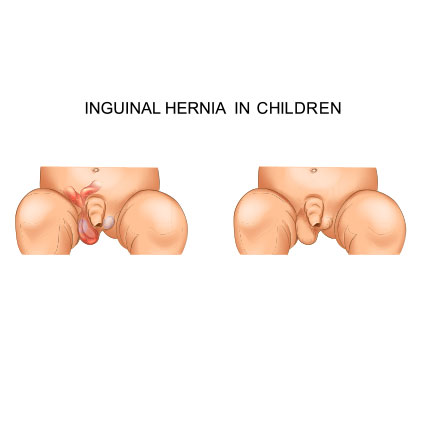
Inguinal Hernia
Inguinal Hernia
Non-Strangulated (Non-Obstructed) Inguinal Herniarepair is the most common operation performed on premature infants. If it is easily reducible and causing no other problems, it is recommended that it is operated on before the infant’s discharge home.
Clinical Presentation
- Painless swelling in the inguinal region (groin)
- More common in males (88%). In boys, 60% are on the right, 25% on the left and 15% of cases are on both sided.
- More common in premature infants and in infants with raised intra-abdominal pressure.
- May feel an impulse on crying straining or coughing.

Management
- Inguinal hernia repair is necessary because of the danger of strangulation (twisting with blood supply being cut off).
Strangulated (Obstructed) Inguinal Hernia
A loop of small intestine becomes trapped in the hernial sac. Early reduction is important to save the trapped bowel and also the testis on the same side. The testicular vessels can be severely comprised by a tense hernia in infants.
Clinical Presentation
- Inconsolable crying and a lump in the inguinal region.
- The lump is often tense, tender and not reducible.
- There may be vomiting and abdominal distension.
- The infant may deteriorate so careful monitoring and prompt intervention is necessary.
Management
- Admit to hospital
- Stop feeds, Insert IV, take blood tests and start IV fluids.
- Start IV antibiotics.
- Abdominal x-rays.
- Emergency surgery: Surgical repair is via a small incision over the groin area.